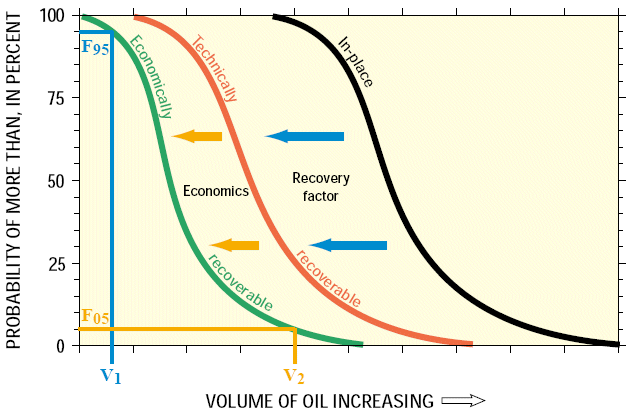Oil Field Terminology

How much oil is in an oil field? It seems like a simple question but the answer is complex. The United States Geological Service (USGS) provides this graph.

The USGS explains:
In-place resources. Volume of petroleum contained in
accumulations of at least 50 MMBOE, without regard to recoverability.
Technically recoverable resources. Volume of petroleum representing
that proportion of assessed in-place resources that may be recoverable using
current recovery technology,
without regard to cost.
(highlight added)
Economically recoverable resources. Volume of technically recoverable
petroleum for which the costs of discovery, development, production, and
transport, including a return to capital, can be recovered at a given market
price.
95% probability level (F95). Refers to a 19 in 20 chance that the
amount present will be at least as large as the amount shown.
5% probability level (F05). Refers to a 1 in 20 chance that the
amount present will be at least as large as the amount shown.
The answer to a simple question can vary wildly. It depends on the exact question. Do you want to know how much oil is in the field? That would be the "in-place" oil. Do you want to know how much oil will actually be produced? That would be the "economically recoverable" oil. Do you want to know how much oil can be produced if you were unconstrained by cost and environmental considerations? That would be the "technically recoverable" oil. Do you want to know the very conservative estimate? That would be the "F95" estimate. Do you want the wildly optimistic estimate? That would be the "F05" estimate. There is also the "mean estimate." That is supposed to mean the estimate in the middle of the other estimates which implies enough estimates to be statistically meaningful.